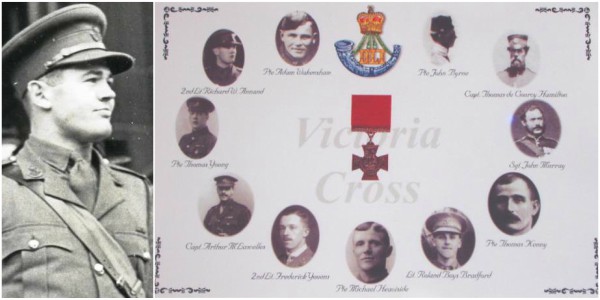The Victoria Cross is the highest honor in the United Kingdom given to members of the British armed forces. The first man to receive it in WWII was a banker who dreamed of becoming a seaman officer.
Richard Wallace Annand was born in South Shields, England, in 1914. His father, a lieutenant commander in the Royal Navy, died in combat a year later. After finishing school time, for a brief period, Annand worked as a banker. But his dream was to follow his father’s footsteps.
In 1933, he joined the Royal Navy Volunteer Reserve. Three years later he was promoted to Sub-Lieutenant, completing both a navigation and a gunnery course. The following year, this 23-years-old volunteer applied for a regular post in the Royal Army but was offered only an administrative position due to his young age. He declined, believing that he already wasted enough time behind a desk.

At the beginning of 1938, Annand was successfully commissioned as a Second Lieutenant of the Durham Light Infantry. Two years later, he found himself surrounded by Belgian forest scenery – as part of DLI’s 2nd Battalion. On 12 May, they set up headquarters at La Tombe and split into four companies, in order to secure their position.
Richard Annand was part of the D company, tasked with guarding a strategically important bridge across the River Dyle. On 14 May, the first retreating Belgian and French forces and refugees were crossing the bridge when C section’s patrol notified them of an incoming German attack. They managed to halt the attack long enough to withdraw and blow up the bridge.
The next morning, Nazis were advancing rapidly, and covered by heavy mortar fire they managed to cross the shallow river. DLI forces fought back but found themselves in an increasingly desperate situation. That is until Annand decided to go beyond what was expected of him. He rushed into the platoon sergeant’s headquarters, demanding a box of hand grenades.
He ran through the barrage fire, reached the top of the bridge and showered the Germans with grenades. When he ran out of bombs, he went back for more. His second attempt proved even more successful, but also got him wounded. German advancement was obstructed, and he got his injuries treated.
The following evening, another attack ensued. Annand repeated his stunt, even more successfully than before. Nevertheless, news broke out that the Germans broke through some other positions and everyone was forced to retreat. But when Annand’s platoon started to withdraw, he learned that his batman was left behind, wounded.
Annand runs back and founds him, loads him on a wheelbarrow and hurries back to safety. On the way to meet their platoon, he found his route jammed by a fallen tree. His yesterday’s wounds open and bleeding, Annand was unable to lift his comrade over the fallen tree and eventually set off to look for assistance. Weak from loss of blood, he collapsed on the way. His troops found him and evacuated him.

Annand was taken back to Britain, where he underwent the treatment. Unfortunately, he ended up being permanently hearing disabled. On 3 September 1940, King George VI awarded him the Victoria Cross, for his bravery in fighting the enemy and his rescue attempt. Until the end of the war, he served on British soil.
In 1948, he was promoted to Captain, but at the end of the same year, he retired due to disability. The rest of his life he spent engaged with various initiatives for helping the disabled. He was among the founding members of the British Association of the Hard of Hearing. His contemporaries remember him as a kind man with boyish charm, who never bragged about his achievements. He died aged 90.
